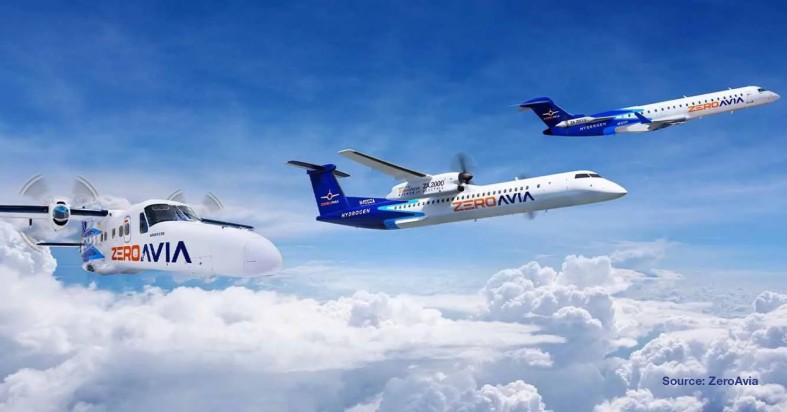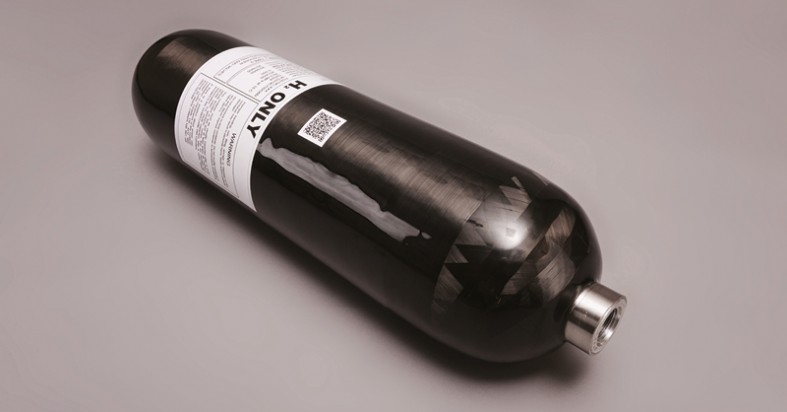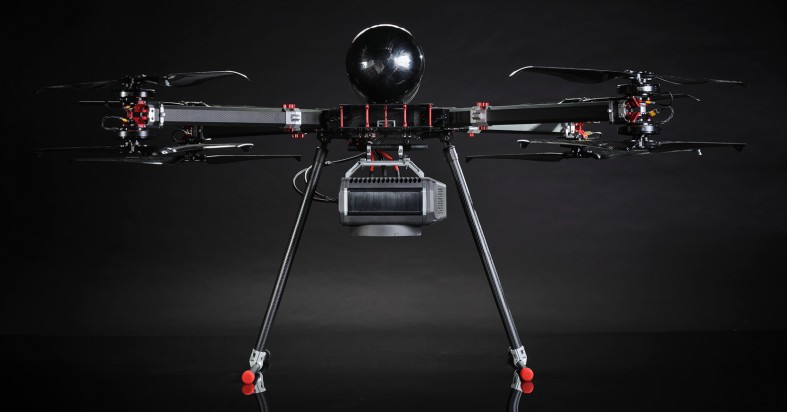US +1800 764 0366 | Europe & Middle East +44 (0)115 980 3800 | Asia-Pacific: +61 2 7227 5369

Road transportation has made significant strides in adopting cleaner fuels. The aviation industry, however, still grapples with reducing its carbon emissions. Estimated to contribute around 2.5% of global carbon emissions, the sector is being urged to hit ‘Jet Zero’ by 2050. The opportunities to explore hydrogen cylinders for aviation are being interrogated, with Luxfer Gas Cylinders supporting companies who are making progress towards greener air travel.
Among the challenges being navigated is the limited technology for making hydrogen dense enough for aerospace application. The factors that have impacted scale up of the clean gas in other sectors like maritime as well, include:
Fuel density: Replacing jet fuel with a less dense alternative like hydrogen is a significant hurdle. Jet fuel is quick to refill, doesn’t take up much space, and has high gravimetric efficiency (energy output relative to weight).
Hydrogen density: To make hydrogen a feasible option for large passenger aircraft, its low density needs to be addressed. Hydrogen in gaseous form is up to 1,000 times less dense than jet fuel.
Embedding hydrogen cylinders to fly smaller aircrafts
For hydrogen to make its mark in the aviation industry, embedding its use in smaller aircrafts is a crucial step. Luxfer has been leading this change, partnering with UK-based ZeroAvia to develop hydrogen-electric engines, strategically integrating hydrogen cylinders within them. ZeroAvia’s efforts in developing commercially-viable fuel cell technology have been noteworthy, with plans for an emissions-free 80-seater aircraft flying up to 1,000 nautical miles by 2027. The company is one example of pioneers in this space, which will break ground for cleaner air journeys.
Another significant opportunity lies in short-hop travel, where hydrogen can power planes carrying up to 20 passengers over a few hundred miles – and there are tens of thousands of these kinds of aircraft, from players such as Cessna and Piper. This could be a game-changer for connecting regional airports to larger transport hubs.

The challenges of using hydrogen within larger aircrafts
Despite the recent success of hydrogen in powering small aircraft, translating these concepts to larger aircraft presents various challenges. Among the possibilities:
Liquid hydrogen: Liquid hydrogen could present a workable option for larger aircrafts where space is at a premium. Big corporations are investigating the feasibility of this. However, liquifying hydrogen is costly, and it requires extremely low storage temperatures to maintain its liquid state.
Hybrid solutions: Collaborations with companies like CMB.TECH, which focuses on hybrid solutions, could provide a path forward. By integrating a small amount of aircraft fuel with hydrogen, overall emissions can be significantly reduced. Currently in its infancy, it’s viable that hydrogen technology will develop sufficiently to meet long haul, high-capacity air travel needs in five or ten years.
The path to hydrogen-powered flight
Despite holding promise, the aviation industry is tightly regulated. Significant technical and regulatory progress is required to mainstream hydrogen usage. There are two key considerations that will affect the future for hydrogen in aerospace:
Regulatory approval: Test aircraft using hydrogen will need to clock many hours to get regulatory approval from authorities like the UK’s Civil Aviation Authority or the US’s Federal Aviation Authority.
Future prospects: While it’s estimated that commercialising hydrogen for aircraft may be at least five years away, rapid advancements could significantly speed up adoption. This will be driven by manufacturers who are willing to invest in the technology and work with the relevant classification bodies to make it viable.

Source: Intelligent Energy, 2022
The future: hydrogen-powered drones
The drone industry is another exciting frontier for hydrogen-powered flight. Luxfer has supplied hydrogen cylinders to Intelligent Energy for around five years, supporting its product testing within fuel cell systems. Weight is critical in aerospace, and the team at Intelligent Energy has produced a very lightweight fuel cell. This offers the potential to extend flight times and decrease refuel windows, making hydrogen an attractive power source. However, safety remains paramount for cylinders in such environments, where temperature changes and unstable conditions are common. In response, we supply Type 3 cylinder technology, as a robust solution.
Harnessing hydrogen for ground operations
In the broader scheme of aviation carbon reduction, the vehicles and equipment supporting ground operations around aircraft also play a significant role. These present another route for implementing hydrogen, and the developmental efforts required are less substantial compared to air-bound applications.
For example, ground equipment, like tugs, auxiliary generators, passenger buses that run around terminals and baggage vehicles could all be powered by hydrogen, thereby reducing the overall carbon footprint of the industry. Luxfer has partnered with a range of companies for these kinds of carbon-free solutions.
However, the infrastructure challenge remains a barrier. For instance, the transition to hydrogen will require modifications to airport fuelling, storage, and handling procedures. Yet, these barriers are not insurmountable, as demonstrated by the budget airline easyJet’s recent identification of hydrogen as a key element in its net-zero pathway.
In addition, ZeroAvia has launched a partnership with Birmingham Airport (BHX), which aims to deliver the first hydrogen-powered domestic passenger journeys to Glasgow, Aberdeen, Belfast and Dublin in the next couple of years.
As the aerospace industry seeks reliable and safe solutions, Luxfer’s trusted expertise in transporting gas in extreme environments – based on a legacy of decades in storage solutions – instils confidence. With the hydrogen revolution continuing at pace, operators will seek lightweight and high-pressure solutions – cornerstones of Luxfer’s product range.